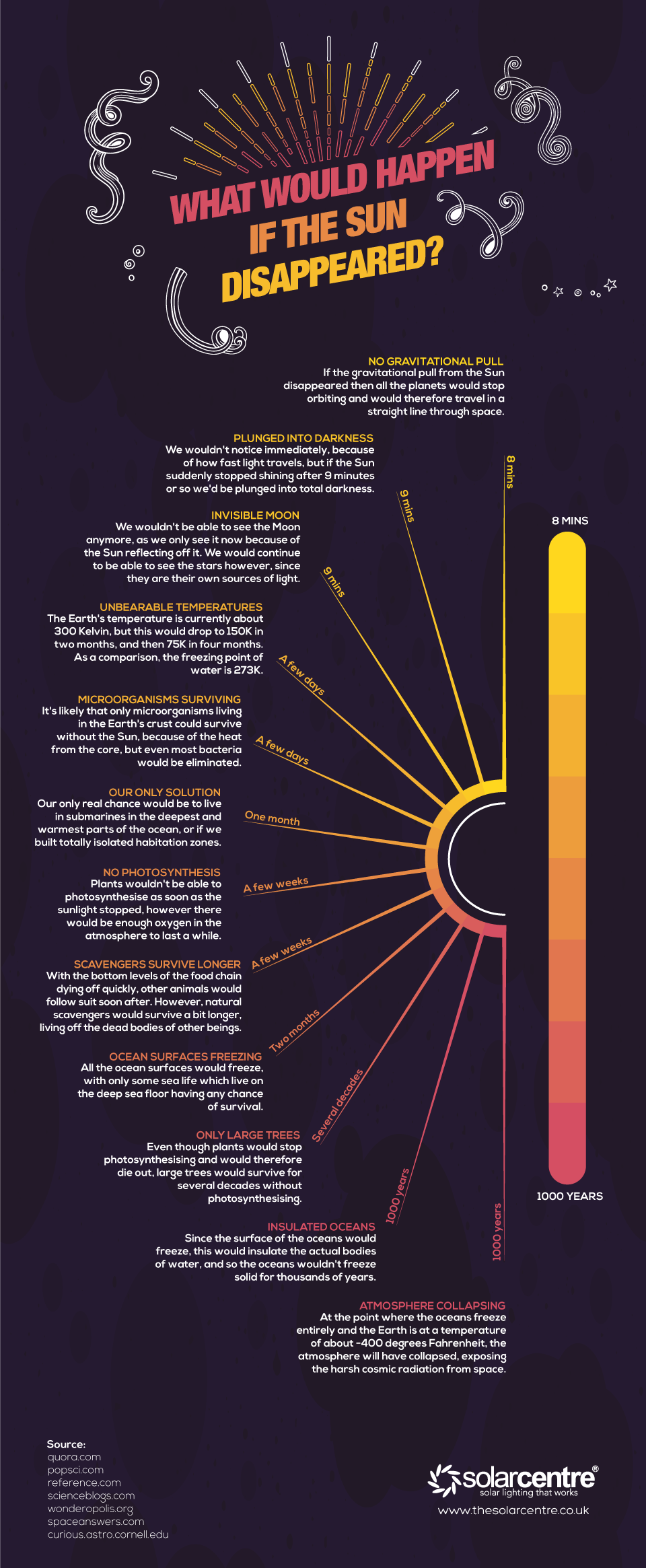Our Sun isn't just the centre of our Solar System, it's the whole reason we exist in the first place.
But it's not just energy and heat that our star provides us. As the infographic below shows, if the Sun suddenly disappeared, the cold, dark night we'd be plunged into would be the least of our worries.
For starters, there's the whole gravitational pull problem.
As the infographic below shows, within just 8 minutes, all the planets in the Solar System would have nothing to orbit around, and would start moving in a straight line through space - until we got sucked into the gravitational pull of some other massive body, that is.
That wouldn't be so bad initially, because at least the light from the Sun would still be reaching us, thanks to the fact that our Sun is around 149.6 million km (93 million miles) away, and even travelling at the speed of light, sunlight takes a good 9 minutes to reach us.
But after 9 minutes, we'd be plunged into darkness, and we'd stop being able to see the Moon.
Within two months, the Earth's temperature would drop to an average of –123 degrees Celsius (–190 degrees Fahrenheit), and after four months we'd hit an icy new low of –198 degrees Celsius (–325 degrees Fahrenheit).
Photosynthesis would stop, and most life on the planet would die out, except for any crafty scavengers, large trees, and microbes living within Earth's crust.
Our only chance of survival would be to live in submarines that could run indefinitely in the deepest parts of the ocean, where heat from Earth's core would warm things up slightly.
But eventually, even that wouldn't be enough to save us, and the Solar Centre infographic below illustrates what the planet's grizzly end would look like:
 The Solar Centre
The Solar Centre
The good news is that our Sun isn't predicted to burn out for around another 5 billion years, and when that happens, it's not going to just suddenly disappear, it's going to be a very slow death.
But we don't really have to worry about it too much, because within 1 billion years, our Sun will get so hot that our oceans will boil and Earth will become uninhabitable.
And hopefully by then we'll be thriving on another planet - or maybe even in another solar system. How are those EM Drive tests coming along?
